Clamp the block of wood in the vice of the XY table.
We want its top surface to be perpendicular to the drill press spindle. A top skim with end mill bit or flycutter could be done. My sanding drum has abrasive on its bottom, suitable for this squaring-off top skim.
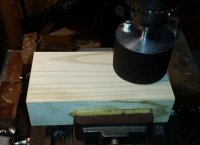
Change over to a 5/16" drill bit. Set the 3/8" fender washer atop the wood block as a drilling guide, ensuring that the washer has full coverage support by the wood.
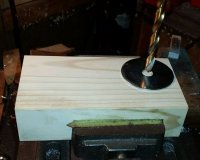
Drill the 5/16" hole.
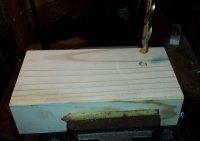
We want its top surface to be perpendicular to the drill press spindle. A top skim with end mill bit or flycutter could be done. My sanding drum has abrasive on its bottom, suitable for this squaring-off top skim.

Change over to a 5/16" drill bit. Set the 3/8" fender washer atop the wood block as a drilling guide, ensuring that the washer has full coverage support by the wood.

Drill the 5/16" hole.

Last edited:

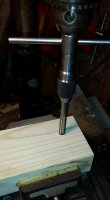
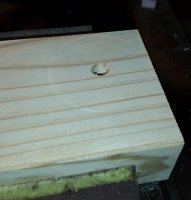
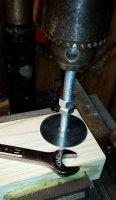
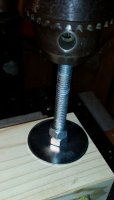
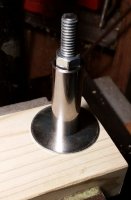
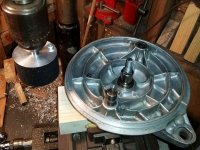
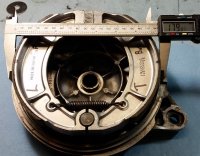
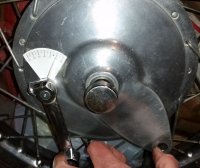
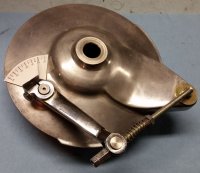
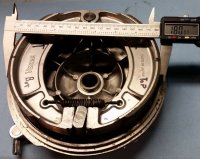
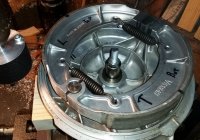
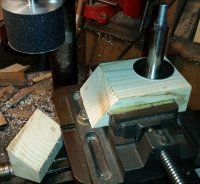
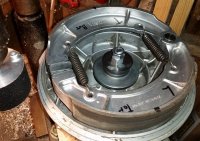
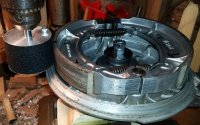
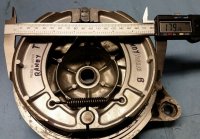
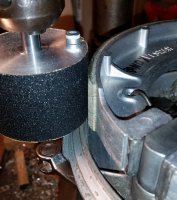

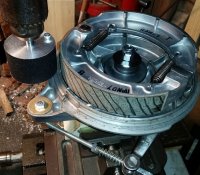
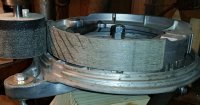

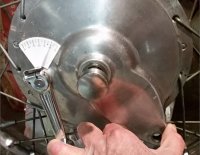
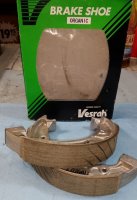
 Will get some measurements, maybe mount up on lathe and scrub into a drum for a bit see how they start to seat, when I find them.
Will get some measurements, maybe mount up on lathe and scrub into a drum for a bit see how they start to seat, when I find them. but the correct orientation.
but the correct orientation.